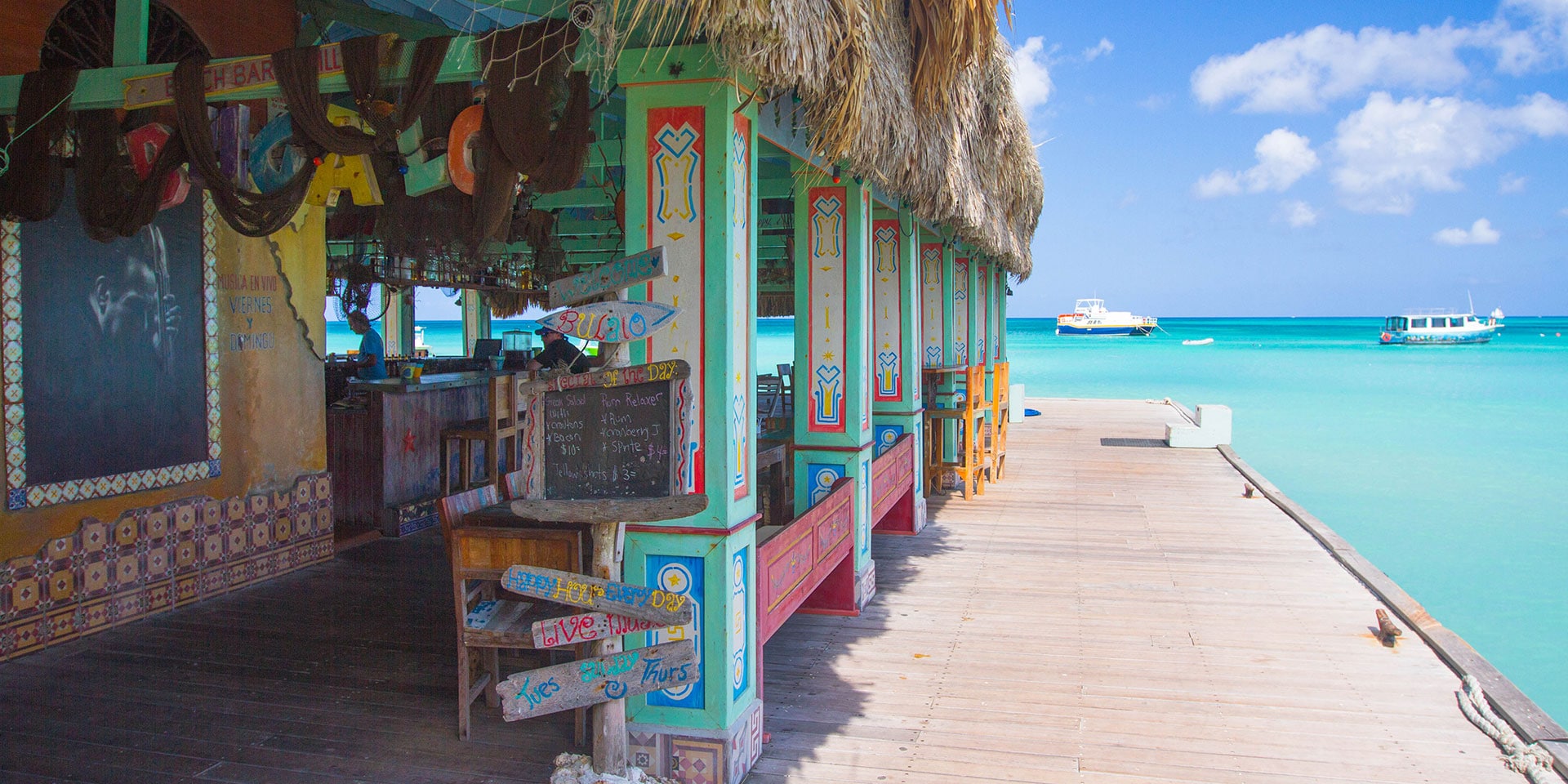Quick Guide
Aruba’s weather is generally wonderful, though Dec. – April marks high season, as evidenced by a rise in prices and crowds.
If you’re looking for quiet and don’t mind a chance of rain (the island is south of the hurricane belt, and direct hits are rare), prices and crowds drop Sept. – Nov.
Visas
Americans, Canadians, Australians, New Zealanders, and European Union (EU) nationals can stay up to one month without a visa. U.S. and Canadian citizens need a valid passport (with at least 6 months before it expires) to enter Aruba. EU citizens need a passport and EU Travel Card. A valid passport is required of all other nationalities. Be prepared to show an onward or return ticket or proof of sufficient funds for your stay.
Money
The local currency is the Aruban florin, though the American dollar is also widely accepted. ATMs are widely available and dispense both U.S. dollars and Aruban florins. Prices are often shown in both florins and U.S. dollars.
Travel Health
Before traveling, research and prepare for what to do if you get sick while away.
Getting Here
Aruba is served by Queen Beatrix International Airport (AUA), while cruise ships arrive at the Aruba Ports Authority.
Getting Around
Many visitors are content staying at their resort, but to reach further afield on the island, car rentals are convenient and offer freedom to explore. Taxis (with some fares set for fixed distances) are also available, and many resorts offer shuttle services.
Local Lingo
Aruba’s official languages are Papiamento and Dutch, but most locals also speak English and Spanish. Learn a few phrases in the local language. Bon dia, bon tardi, bon nochi: Good morning, good afternoon, good evening, respectively. Danki: Thank you. Aruba ta bunita: Aruba is beautiful.
Must-Have Apps
Aruba Travel Guide; Aruba Health App
Insider Tips
Eat like an Aruban local and try pastechi. These fried pies, or empanadas, have a wide variety of fillings, such as cheese, ham, chicken and even chop suey and are popular for breakfast and as snacks.
Aruba’s weather is generally wonderful, though Dec. – April marks high season, as evidenced by a rise in prices and crowds.
If you’re looking for quiet and don’t mind a chance of rain (the island is south of the hurricane belt, and direct hits are rare), prices and crowds drop Sept. – Nov.
Visas
Americans, Canadians, Australians, New Zealanders, and European Union (EU) nationals can stay up to one month without a visa. U.S. and Canadian citizens need a valid passport (with at least 6 months before it expires) to enter Aruba. EU citizens need a passport and EU Travel Card. A valid passport is required of all other nationalities. Be prepared to show an onward or return ticket or proof of sufficient funds for your stay.
Money
The local currency is the Aruban florin, though the American dollar is also widely accepted. ATMs are widely available and dispense both U.S. dollars and Aruban florins. Prices are often shown in both florins and U.S. dollars.
Travel Health
Before traveling, research and prepare for what to do if you get sick while away.
Getting Here
Aruba is served by Queen Beatrix International Airport (AUA), while cruise ships arrive at the Aruba Ports Authority.
Getting Around
Many visitors are content staying at their resort, but to reach further afield on the island, car rentals are convenient and offer freedom to explore. Taxis (with some fares set for fixed distances) are also available, and many resorts offer shuttle services.
Local Lingo
Aruba’s official languages are Papiamento and Dutch, but most locals also speak English and Spanish. Learn a few phrases in the local language. Bon dia, bon tardi, bon nochi: Good morning, good afternoon, good evening, respectively. Danki: Thank you. Aruba ta bunita: Aruba is beautiful.
Must-Have Apps
Aruba Travel Guide; Aruba Health App
Insider Tips
Eat like an Aruban local and try pastechi. These fried pies, or empanadas, have a wide variety of fillings, such as cheese, ham, chicken and even chop suey and are popular for breakfast and as snacks.
DID YOU KNOW?
Approximately 18 percent of Aruba’s land area lies within Arikok National Park. Plan a day away from the beaches to explore here and see the other side of Aruba’s great outdoors.
Marriott Bonvoy Offers & Promotions
Enjoy exclusive offers on hotels stays and experiences in Aruba
Offers
Where to Stay
Book Over 30 Hotel Brands Around the World












